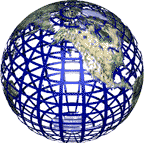|
|
|
We have achieved a fusion of electromagnetic and spin properties in an atomic interferometric field which has the impact upon matter anticipated by the general theory of a boson universe interacting with matter cited above under science. The result is a "spongey" transformational state of matter responding to a variety of transformational cues. In this state, matter and energy assume a third form based upon their wave function signature and this signatures interaction with the four recognized forces of the universe: gravity, electro-magnetic forces, the weak attraction and strong interaction. The fifth force recently discovered is depend upon its transformational value in a geometry based upon spin as outlined below.
2) The theory possesses supersymmetric generators that map interacting bosonic terms of the action into interacting fermionic ones. This will place strong constraints on the possible interactions.
(3) Unlike the bosonic theory, we have to add a specific insertion
term at the point at which the strings break. Without this extra
insertion term, the theory is neiher supersymmetric nor Lorentz invariant...
Because there are so many stages in the reduction of a Dirac spinor with 32 complex components, let us summarize how we reached only four independent states:
Dirac= 32 complex components,
Majorana= 32 real components,
Majorana-Weyl= 16 real components,
light Cone = 8 real components,
canonical = 4 real components.
Now, that we have decomposed the spinors according to the SU(4) subgroup of SO(8), we have to decompose the vectors under SU(4) as well. (Michio Kaku)
The theoretical principles are not important in the current context as this is a practical engineering application which has functions with the same characteristics and transformations since April 2000. The journals linked to the licenses reveal the continuity in experiments repeated during this time frame.
